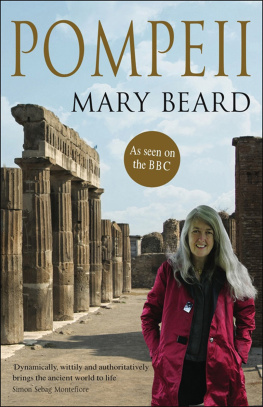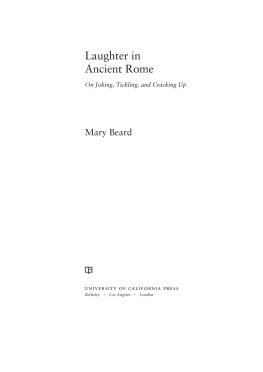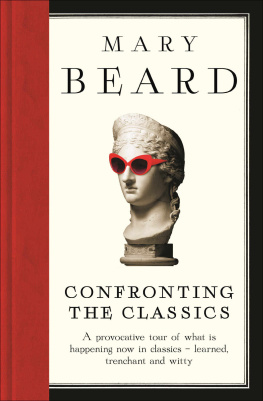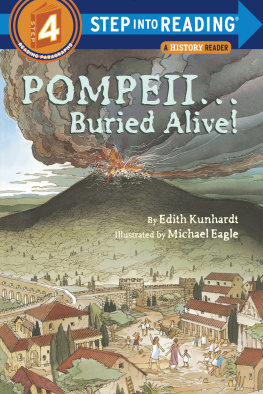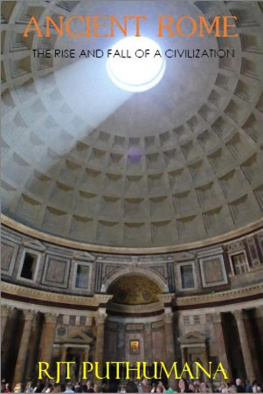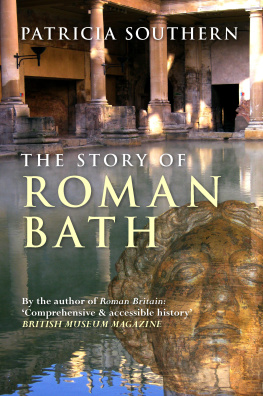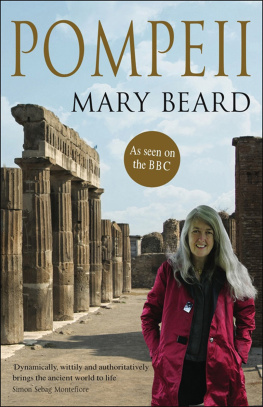POMPEII
ALSO BY MARY BEARD
Religions of Rome (with John North and Simon Price)
The Invention of Jane Harrison
The Parthenon
The Colosseum (with Keith Hopkins)
The Roman Triumph
POMPEII
The Life of a Roman Town
MARY BEARD

This paperback edition published in 2009
First published in 2008 by
PROFILE BOOKS LTD
3A Exmouth House
Pine Street
London EC1R OJH
www.profilebooks.com
1 3 5 7 9 10 8 6 4 2
Printed and bound in Great Britain by
Bookmarque Ltd, Croydon, Surrey
Typeset in Fournier by MacGuru Ltd
info@macguru.org.uk
The moral right of the author has been asserted.
All rights reserved. Without limiting the rights under copyright reserved above, no part of this
publication may be reproduced, stored or introduced into a retrieval system, or transmitted, in any
form or by any means (electronic, mechanical, photocopying, recording or otherwise), without the
prior written permission of both the copyright owner and the publisher of this book.
A CIP catalogue record for this book is available from the British Library.
ISBN 978 1 86197 596 6

CONTENTS
Life interrupted
In the early hours of 25 August 79 CE, the rain of pumice falling on Pompeii was easing off. It seemed a good moment to leave the city and make a bid for safety. A straggling group of more than twenty fugitives, who had been taking shelter within the walls while the dreadful downpour had been at its worst, took a chance on one of the eastern gates of the city, hoping to find a way out of range of the volcanic bombardment.
A few others had tried this route some hours before. One couple had fled, carrying just a small key (they presumably hoped one day to return to whatever it locked house, apartment, chest or strong box) and a single bronze lamp (Ill. I). This can hardly have made much impact against the darkness of the night and the clouds of debris. But it was an expensive and fashionable object, moulded in the shape of a black African head a hint of the (to us) disconcerting forms of ingenuity we shall often come across in Pompeii. The pair didnt make it. Overwhelmed by the pumice, they were found in 1907 where they had fallen, next to one of the grand tombs which lined this road, like others, out of the city. They collapsed, in fact, next to the lavish memorial to a woman who had died perhaps fifty years before, Aesquillia Polla, the wife of Numerius Herennius Celsus. Just twenty-two years old (as we can still read on the stone), she must have been less than half the age of her rich husband, a member of one of Pompeiis most prominent families, who had served as an officer in the Roman army and had twice been elected to the highest office in the citys local government.
The layers of pumice had built up to several feet by the time the other group decided to risk escape in the same direction. Walking was slow and difficult. Most of these fugitives were young men, many carrying nothing with them, either because they had nothing to bring or because they could no longer get to their valuables. One man had taken the precaution of arming himself with a dagger, in an elegant sheath (he had another sheath with him too, empty, because he had perhaps lost or lent the weapon it had held). The few women in the group had rather more. One carried a little silver statuette of the goddess Fortuna, Good Fortune, sitting on a throne, plus a handful of gold and silver rings one with a tiny silver phallus attached by a chain, as a lucky charm perhaps (and another object we shall often meet in the course of this book). Others had their own little store of precious trinkets: a silver medicine box, a tiny base to hold a (missing) statuette and a couple of keys, all stuffed into a cloth bag; a wooden jewellery case, with a necklace, ear-rings, silver spoon and more keys. They had also brought what cash they could. For some just a bit of loose change; for others, whatever they had stashed away at home, or the takings of their shop. But it was not much. All in all, between the whole group there was barely 500 sesterces which is in Pompeian terms about what it cost to buy a single mule.
1. Small lamps in the shape of human heads (or feet) were fashionable in the first century CE. Here the oil was poured into the hole in his brow and the flame burned at his mouth. Including the petals which form the handle, it is just 12 centimetres long.
Some of this group got a little further than the earlier couple. Fifteen or so had reached the next grand memorial, twenty metres further down the road, the tomb of Marcus Obellius Firmus, when what we now know as the pyroclastic surge from Vesuvius wiped them out a deadly, burning combination of gases, volcanic debris and molten rock travelling at huge speed, against which nothing could survive. Their bodies have been found, some mixed up with, even apparently still clutching, branches of wood. Maybe the more agile amongst them had taken to the trees which surrounded the tombs in a hopeless attempt to save themselves; more likely the surge which killed the fugitives also brought the trees crashing down on top of them.
2. The plaster casts made from the bodies of the victims are constant reminders of their humanity that they were just like us. This memorable cast of a man dying, with his head in his hands, has been placed for safe-keeping in a site storeroom. He now seems to be lamenting his own imprisonment.
The tomb of Obellius Firmus itself fared rather better. He was another Pompeian grandee, who had died a few decades earlier, and long enough ago for the sides of his monument to be used as a local message board. We can still read here the advertisement for some gladiatorial shows, and plenty of scrawlings by some tomb-side dawdlers: Hello Issa, from Habitus, Hello Occasus, from Scepsinianus, and so on (Habitus friends apparently replied with a large phallus and testicles, and the message Hello Habitus from your mates everywhere). Up above, the text of the formal epitaph of Obellius Firmus declared that his funeral had been paid for by the local council, to the cost of 5000 sesterces with an extra 1000 sesterces being added by some other local officials for incense and a shield (probably a portrait on a shield, a distinctive Roman type of memorial). These funeral expenses were, in other words, well over ten times what the whole party of fugitives had managed to gather together for their flight to safety. Pompeii was a city of poor and rich.
3. Someones precious possession? This squat little figurine made out of red amber from the Baltic was found with one of the unsuccessful fugitives. Just 8 centimetres tall, it was perhaps meant to represent one of the stock characters from Roman mime, popular entertainment in Pompeii.
We can trace many other stories of attempted flight. Almost 400 bodies have been discovered in the layers of pumice, and nearer 700 in the now solid remains of the pyroclastic flow many of these recaptured vividly at the moment of their death by the clever technique, invented in the nineteenth century, of filling the space left by their decomposing flesh and clothes with plaster, to reveal the hitched-up tunics, the muffled faces, the grim expressions of the victims (Ill. 2). One group of four, found in a street near the Forum, was probably an entire family trying to make its escape. The father went in front, a burly man, with big bushy eyebrows (as the plaster cast reveals). He had pulled his cloak over his head, to protect himself from falling ash and debris, and carried with him some gold jewellery (a simple finger-ring and a few ear-rings), a couple of keys and, in this case, a reasonable amount of cash, at almost 400
Next page
